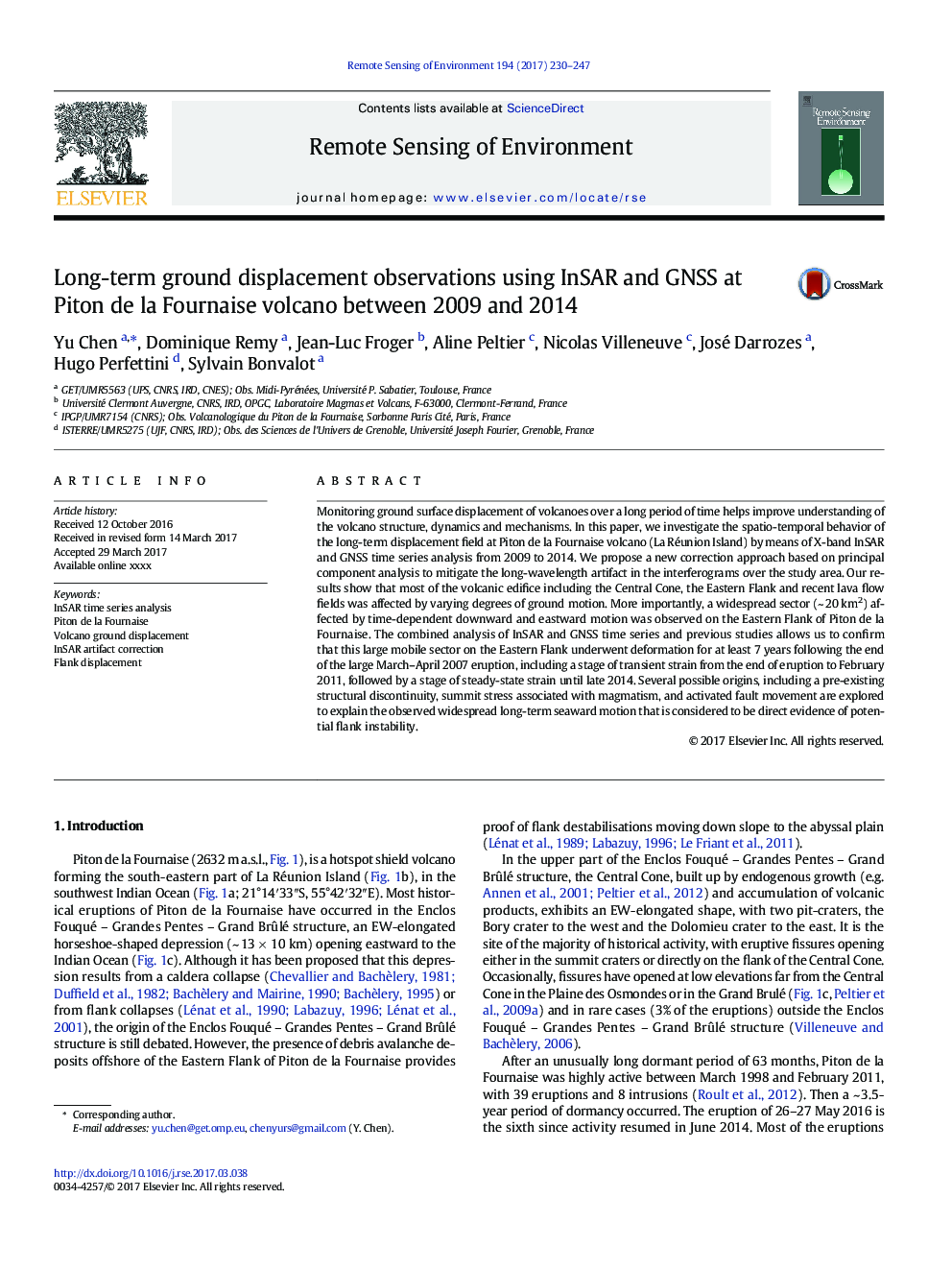| Article ID | Journal | Published Year | Pages | File Type |
|---|---|---|---|---|
| 5755004 | Remote Sensing of Environment | 2017 | 18 Pages |
Abstract
Monitoring ground surface displacement of volcanoes over a long period of time helps improve understanding of the volcano structure, dynamics and mechanisms. In this paper, we investigate the spatio-temporal behavior of the long-term displacement field at Piton de la Fournaise volcano (La Réunion Island) by means of X-band InSAR and GNSS time series analysis from 2009 to 2014. We propose a new correction approach based on principal component analysis to mitigate the long-wavelength artifact in the interferograms over the study area. Our results show that most of the volcanic edifice including the Central Cone, the Eastern Flank and recent lava flow fields was affected by varying degrees of ground motion. More importantly, a widespread sector (~Â 20Â km2) affected by time-dependent downward and eastward motion was observed on the Eastern Flank of Piton de la Fournaise. The combined analysis of InSAR and GNSS time series and previous studies allows us to confirm that this large mobile sector on the Eastern Flank underwent deformation for at least 7Â years following the end of the large March-April 2007 eruption, including a stage of transient strain from the end of eruption to February 2011, followed by a stage of steady-state strain until late 2014. Several possible origins, including a pre-existing structural discontinuity, summit stress associated with magmatism, and activated fault movement are explored to explain the observed widespread long-term seaward motion that is considered to be direct evidence of potential flank instability.
Keywords
Related Topics
Physical Sciences and Engineering
Earth and Planetary Sciences
Computers in Earth Sciences
Authors
Yu Chen, Dominique Remy, Jean-Luc Froger, Aline Peltier, Nicolas Villeneuve, José Darrozes, Hugo Perfettini, Sylvain Bonvalot,
